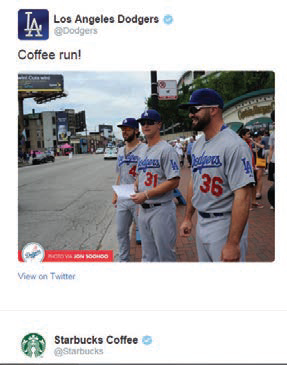Set Up an Automated Email Highlight Reel

By Amberly Dressler, Managing Editor
With a click-through rate higher than many industries - including retail, sports and travel - social media networks like Twitter, LinkedIn and Google+ are capitalizing on their users' willingness to open their emails (22 percent open rate, according to MailChimp) and click through (4 percent) by creating "email highlight reels" to showcase some of the most popular activity occurring on their network.
Social networks are using their ocean of data to personalize these emails to motivate individuals to act based on posts they may have missed, people they should follow and what is popular within their own network. To get started, let's look at real-world examples of this trend and the strategies used before marketers hit send.
Engagement First
While other social networks are sending highlight reel emails too, these messages may be especially important for the future of Twitter because of its largely inactive user base. Business Insider came to the conclusion that for every five new Twitter signups, four don't go on to use the service even once per month. Part of the problem could be users don't see enough content that interests them enough to participate. As such, Twitter has not only started sending recommendations on who to follow, but also "Popular in Your Network" emails that highlight popular tweets from accounts a person already follows - hoping they will motivate users to visit the network then, and again (see image).

(Twitter's "Popular in Your Network" emails highlight activity a user may be interested in further engaging with, like this tweet from the LA Dodgers.)
Although receiving similar emails daily could make recipients lose interest, the near real-time nature of highlight reels, as well as the personalization factor (targeted to the individual based on their behaviors, demographics and preferences) keeps the content fresh. Further, there is an anticipatory effect that brands create in the mind of a customer when a brand promotes a specific message or content module on a regular basis, according to Ryan Hofmann, chief brand strategist at Listrak.
Perhaps more importantly, Listrak reports that one-third of the top 1,000 retailers send more than 20 emails per month - with little to show in the way of targeting, much less personalization - so sending highly relevant daily or weekly emails should be of little concern as it relates to desensitization. In fact, this common lack of personalization is one of the reasons retailers are taking a page from social networks' playbooks and creating email highlight reels of their own.
Selling Second
When it comes to gathering the data needed to send highly personalized highlight reel emails, social media networks have a major advantage as their users freely surrender their information, such as who they are, what they like and who they are associated with. Retailers, on the other hand, have to work a little harder to gather complete customer profiles, especially for shoppers who have yet to buy. This is where email highlight reels prove useful.
Using the wisdom of the crowd (what people, who are similar to the recipient, are clicking on and buying), retailers can send recommendations based on newest trending products and top sellers from that month. Leveraging Listrak, Mood - a fabric store often featured on the show "Project Runway" - des just that to drive revenue, website traffic and engagement (read more about Mood's email strategy at wsm.co/emailrunway).
Hofmann of Listrak warns that these campaigns do take a bit more time to set up initially but do not require much upkeep. Email marketers will want to ensure the messaging and taglines used don't necessarily go out of style or that the content doesn't need to be changed more often than seasonally. Once the content is selected, the recommendations are dynamically populated by a retailer's product catalog and visitor behavior, with limited maintenance needed from the brand.
For the Win
By personalizing highlight-reel content based on individuals' activity and the wisdom of their networks, brands will stay top of mind as recipients consider what to buy or how to spend their time in the long term.










